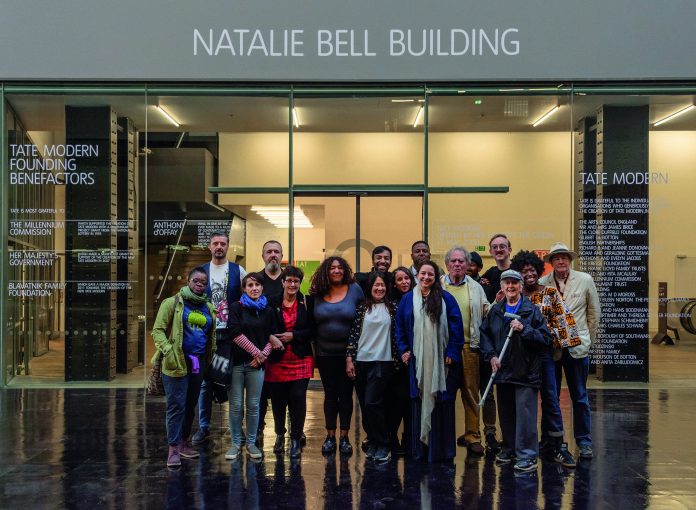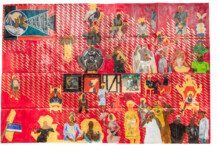The selection of the collective ruangrupa (that’s right,using lower-case letter initiating a proper noum and can be loosely translated from Indonesian as “a space for art “ ) for artistic direction of the Documenta 15, wich will be held in 2022 in the city of Kassel, is a coherent decision and in tune with the current state of contemporary art .
On the one hand the choice is amazing, seeing that the institution has suffered attacks by local rulers, when the previous edition had a US$ 8.4 million deficit, largely caused by sharing the shows with the city of Athens, reaching a total budget US$ 50 million.
Those were of political content attacks, typical of the current war strategy against the culture, also popular in Brazil, who ignored the essential points of the exhibition, focusing on an economic-financial loss, when we know that art and culture do not give profit anywhere. Document 14 had public record, with 1.230.000 visitors against 904.000 from the previous edition.
But the essential point is that Germany has not bowed down to the unwise politicians talks and, honoring the democratic tradition of the Documenta, invited to join the selection team, eight internationally renowned experts, among them, the director of Tate Modern, Frances Morris; the South African curator Gabi Ngcobo; the director of Van Abbe Museum, Charles Esche, and the director of Pinacoteca de São Paulo, Jochen Volz. These four names point to the representativeness of the cultural diversity of the committee.
“We chose ruangrupa thanks to the ability that the group has shown in call several communitie -, including public that go beyond traditional audiences of the artistic medium – , and promote local participation and commitment,” said the team, in a press release.
This statement emphasizes two axes that deserve to be watched carefully and reflect some of the most important proposals of the current art system: to go beyond “traditional audiences” and the involvement with the context.
Ruangrupa himself, or Ruru, as it is known, made it clear in the text they released after being appointed: “If Documenta was launched in 1955 to heal war wounds, why shouldn’t we focus Documenta 15 on today’s injuries, especially ones rooted in colonialism, capitalism or patriarchal structures, and contrast them with partnership-based models that enable people to have a different view of the world. “
In fact, “partnership-based models” is an essential expression to understanding contemporary art, since its beginnings in the years 1960, but that often follow being depreciated by archaic models that keeps the artist as author/criator of an commercial object.
However, since Hélio Oiticica and Lygia Clark, in Brazil, or Joseph Beuys, in Germany, the idea of work was questioned, being replaced by other proposals aiming at the expansion of what would be the place of art: be in the creation of the Free International University, as defended Beuys, in a therapeutic environment, to Clark, or a space for meeting, for Oiticica.
In a text from 2012 made to the 30th edition of the British magazine Afterall, the critic David Teh points out how ruangrupa “has done a deep commitment with Jakarta, both as a place and as subject, and to its population, both as public and as author. From day one, the group has made of the city — the noisy trade and administration machine not considered source of culture — a primary protagonist of an epic adventure of collective storytelling “.
In this sense, the idea of artist-proposer, defended both by Oiticica and Clark, is clear. According to Teh, in that article, “the prodigious capacity of the collective reaches a diverse aesthetic, incorporating from the punk street culture to the street culture, passing through desk research and ethnographic context, reaching even procedural and conceptual experiments. To mix it up is a firm conviction that the participants are agents in a social history alive “.
This proposal of consider the public as an agent, after all, is everything that Beuys and Oiticica sought, in a program that advocated such a big expansion of the artistic field so that there would be no more boundary between art and life. “The museum is the world”, advocated Oiticica. “Everyone is an artist”, preached Beuys. Not by chance, was in Documenta 6, in 1982, that the German artist used the exhibition as a space for the Free International University, and two years later held a series of postcards with provocative texts, among them the phrase “With that I get out of Art”, making clear the institutional breakdown manifest at the time of the so-called “return to painting”. A few months later, he would die.
For the past 50 years, many similar proposals were presented, as a French Nicolas Bourriaud, who came to draw a somewhat Eurocentric theory, the “relational aesthetics”, realizing a production that also use partnerships.
However, between recent and more radical proposals is the work of Cuban Tania Bruguera, at Tate Modern, during her installation at the Turbine Hall, between October 2018 to February of this year. Along with the occupation of the monumental space, she was also responsible for the program Tate Exchange, arm of the museum’s educational department, in an unprecedented action that changed the name of the building Boiler House of the Tate Modern to Natalie Bell, named after a local activist, in addition to working with a group of neighbors of the Museum, which occurred for the first time in the history of the institution, which will be kept for three years.
In lecture on Verbier, Switzerland, (see page xx), Bruguera defended what she considers the new way of understanding what is aesthetics today. To this end, she separated the word in Spanish, “Est Etica”, that is, be ethical. “This is the essential question of artistic production today, take into account the context, be ethical with the other,” said the artist. She even promoted encounters between residents and people in charge of the Museum.
In Brazil, there are many artists who come seeking to create bridges with groups and specific communities. Some people open their workshop transforming it in a reception space for trans people, while others participate in activities in occupations, such as Ocupação 9 de Julho or even work with institutions such as Redes da Maré, an that works with the group of favelas da Maré in Rio de Janeiro, generating actions of defense of these spaces. Are all activities that are based on a commitment to social issues merged with concerns on the field of art or that has in it a trigger. The Hcasa do Povo, in Bom Retiro, borough in São Paulo has been a privileged place for this type of partnership.
So when Ade Darmawan, a member of ruangrupa, States that “an artist must be able to constantly shake the faith of the people and everything around her or him, and contribute critically to social negotiations on existing values”, is found that the Documents 15 will remain the best thermometer for present art or not art.











